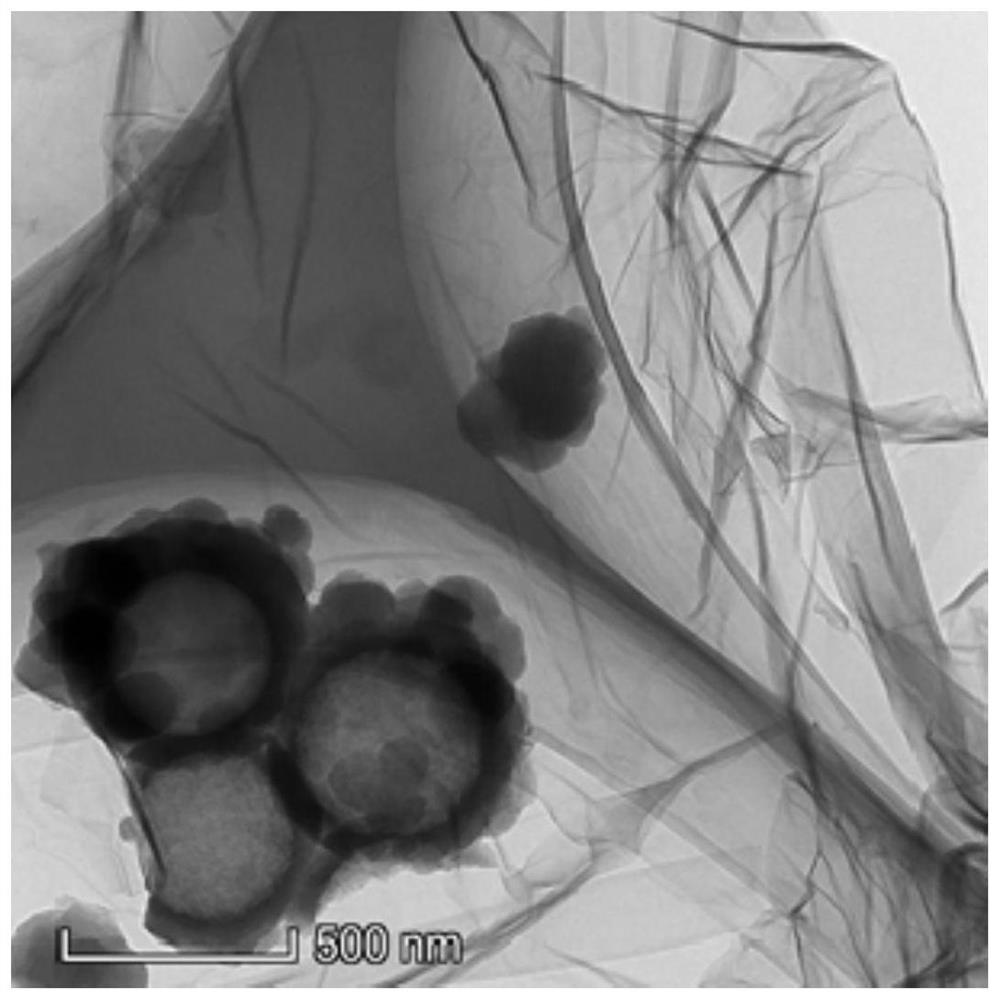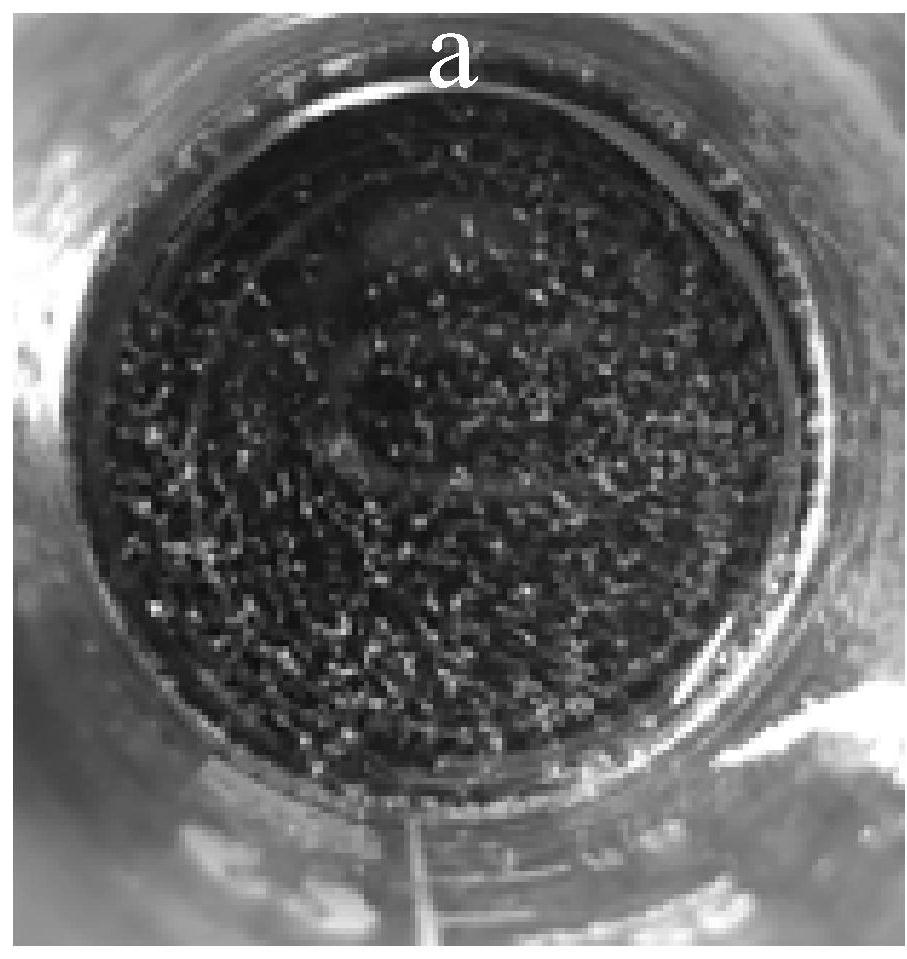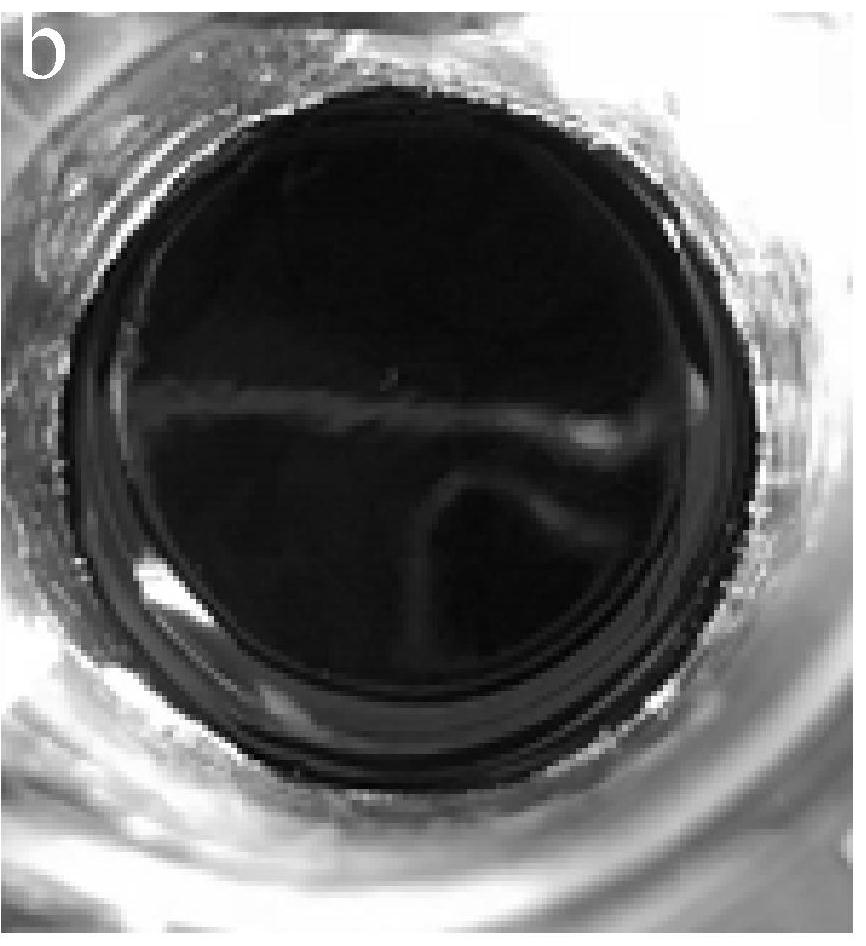A preparation method of hollow mesoporous silica\aps\graphene oxide nanocontainer
A mesoporous silica, \APS\ technology, applied in epoxy resin coatings, coatings, anti-corrosion coatings, etc., can solve the problem of unsatisfactory coating corrosion resistance, reduced corrosion resistance of organic coatings, poor dispersion To achieve long-term corrosion protection, improve dispersion, and improve service life
- Summary
- Abstract
- Description
- Claims
- Application Information
AI Technical Summary
Problems solved by technology
Method used
Image
Examples
Embodiment 1
[0029] (1) Weigh 1 g of cetyltrimethylammonium bromide (CTAB) and add it into a mixed solution of 110 mL of ethanol and 10 mL of water and stir evenly. Add 2 mL of copolymer microsphere template solution to the mixed solution, and sonicate for 10 minutes. The resulting solution was transferred to a 250 mL three-neck flask, and stirred in a water bath at 50° C. for 1 hour. The pH of the solution was adjusted to alkaline by adding 6 mL of ammonia water, and stirring was continued for 10 minutes. Then, 3 mL of tetraethyl orthosilicate (TEOS) was added, and the temperature was kept constant, and stirring was continued for 6 hours to complete the reaction. The resulting slurry was centrifuged at a rotational speed of 4000r / min, and the supernatant was removed. The precipitate was washed three times with water and ethanol, then dried in vacuum at 60°C for 24 hours, and the resulting product was calcined in a muffle furnace at 550°C for 3 hours to remove the microsphere template an...
Embodiment 2
[0034] (1) Weigh 0.5 g of cetyltrimethylammonium bromide (CTAB) and add it into a mixed solution of 55 mL of ethanol and 5 mL of water and stir evenly. Add 1 mL of copolymer microsphere template solution to the mixed solution, and sonicate for 15 minutes. The resulting solution was transferred to a 100 mL three-necked flask, and stirred in a water bath at 55° C. for 1.5 hours. The pH of the solution was adjusted to alkaline by adding 3 mL of ammonia water, and stirring was continued for 15 minutes. Then, 1.5 mL of tetraethyl orthosilicate (TEOS) was added, and the temperature was kept constant, and stirring was continued for 7 hours to complete the reaction. The resulting slurry was centrifuged at a rotational speed of 4000r / min, and the supernatant was removed. The precipitate was washed three times with water and ethanol, and then vacuum-dried at 60°C for 25 hours, and the resulting product was calcined in a muffle furnace at 550°C for 4 hours to remove the microsphere tem...
Embodiment 3
[0039] (1) Weigh 1 g of cetyltrimethylammonium bromide (CTAB) and add it into a mixed solution of 110 mL of ethanol and 10 mL of water and stir evenly. Add 2 mL of copolymer microsphere template solution to the mixed solution, and sonicate for 15 minutes. The resulting solution was transferred to a 250 mL three-necked flask, and stirred in a water bath at 60° C. for 1 hour. The pH of the solution was adjusted to alkaline by adding 6 mL of ammonia water, and stirring was continued for 10 minutes. Then, 3 mL of tetraethyl orthosilicate (TEOS) was added, and the temperature was kept constant, and stirring was continued for 6 hours to complete the reaction. The resulting slurry was centrifuged at a rotational speed of 4000r / min, and the supernatant was removed. The precipitate was washed three times with water and ethanol, and then vacuum-dried at 60°C for 24 hours, and the resulting product was calcined in a muffle furnace at 550°C for 5 hours to remove the microsphere template...
PUM
 Login to View More
Login to View More Abstract
Description
Claims
Application Information
 Login to View More
Login to View More - R&D
- Intellectual Property
- Life Sciences
- Materials
- Tech Scout
- Unparalleled Data Quality
- Higher Quality Content
- 60% Fewer Hallucinations
Browse by: Latest US Patents, China's latest patents, Technical Efficacy Thesaurus, Application Domain, Technology Topic, Popular Technical Reports.
© 2025 PatSnap. All rights reserved.Legal|Privacy policy|Modern Slavery Act Transparency Statement|Sitemap|About US| Contact US: help@patsnap.com



